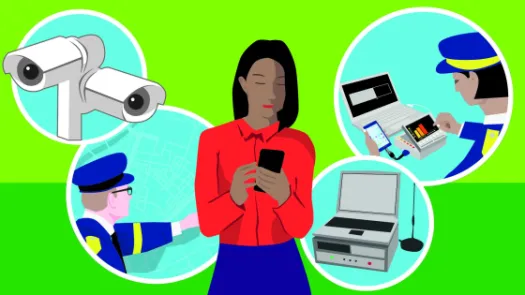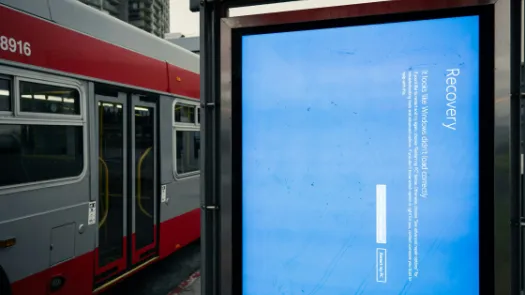Looking to MLATs: A step towards transparency for intelligence sharing agreements

Intelligence sharing agreements can be open and transparent. In fact, the Five Eyes have already disclosed information sharing agreements that relate to key international law enforcement and national security measures.
They’re called mutual legal assistance treaties, or MLATs, and they’ve existed between the Five Eyes, excluding New Zealand, for decades. MLATs define the scope of cooperation between States in criminal investigations: States share sensitive information in criminal investigations between one another under clear legal guidelines that are accessible to all. There’s no reason for intelligence sharing agreements between the Five Eyes—which are under strict lock and key—to be any different.
MLATs are a valuable guidepost for the Five Eyes in any effort to increase intelligence sharing transparency and the rule of law.
Intelligence sharing agreements between the Five Eyes: what we know
The Five Eyes alliance between the United States, the United Kingdom, Canada, Australia, and New Zealand is the most highly integrated signals intelligence (SIGINT) sharing arrangement in the world. Billions of pieces of information—including access to phone numbers, fax numbers, emails, and IP addresses—are shared between these five countries regularly. Information sharing between the United States and United Kingdom is so strong “that SIGINT customers in both capitals seldom know which country generated either the access of the product itself.”
The Five Eyes agreement has been enlarged and appended as needed, and is often amended on a bilateral basis. Unfortunately, the current legal underpinning of the Five Eyes agreement remains shrouded in mystery and is therefore immune from public scrutiny. A lack of transparency means that policy is given supreme precedence over the rule of law. MLATs are a radically different, yet workable way to structure such agreements.
MLATs: What they are and how they work
MLATs are law enforcement tools that allow States to request another country to locate wanted individuals, issue warrants, share evidence, obtain testimony, freeze bank accounts, or repatriate seized assets. MLATs are frequently applied to the sharing of online information. And, like intelligence-sharing agreements, an overarching template for cooperation is filled in with a detailed set of “below the waterline” rules and regulations. Unlike informal intelligence sharing agreements, however, MLATs are subject to international treaty law.
Bilateral MLATs already exist between the United States, the United Kingdom, Canada, and Australia. These treaties were created between the U.S. and these Five Eyes partners in the 1980s and 1990s. MLATs often contain references to respecting the domestic laws of the receiving party, and some even attempt at protecting privacy rights. For example, Access writes that the multilateral, Inter-American MLAT “indicates that the law of the receiving state should indicate the protections for third parties who have a stake in the requested items.”
Intelligence sharing can be easily modelled on MLATs. In fact, the structure of the U.S.-U.K. MLAT is remarkably similar to the 1946 intelligence sharing agreement between the United States and the United Kingdom, known as the UKUSA agreement, which is now public. The current U.S.-U.K. MLAT calls on each party to assist one another in:
providing documents, records, and evidence…locating or indentifying persons…executing requests for searches and seizures; identifying, tracing, freezing, seizing, and forfeiting the proceeds and instrumentalities of crime and assistance in related proceedings; and other such assistance as may be agreed...
In much the same way, the 1946 UKUSA Agreement outlines the products to be shared: collection of traffic; acquisition of communications documents and equipment; traffic analysis; cryptanalysis; decryption and translation; and information regarding communications organizations, practices, procedures, and equipment. Both the UKUSA Agreement and the U.S.-U.K. MLAT allow either party to withhold information if it is in the national interest to do so. As past intelligence sharing agreements are substantially in accord with MLATs, there is little reason for them to remain behind closed doors.
Benefits to modelling intelligence sharing agreements between the Five Eyes on MLATs
With some effort, intelligence sharing agreements could be re-fashioned as formal treaties, like MLATs. Treaties provide predictability and rule of law, both of which are badly needed in intelligence sharing agreements. Since MLATs are public and binding under international law, they provide heightened assurance as to a counterparty’s compliance. If intelligence-sharing agreements were subject to treaty law, and therefore public, governments could more easily hold countries that breach intelligence sharing treaties, or human rights, accountable. Five Eyes citizens would be able to see what privacy protections are included—and what privacy protections are not included—in intelligence sharing treaties.
That said, MLATs aren’t perfect. Current MLAT arrangements are under-funded, and requests for information are time consuming. Undue delays can lead to falling compliance with rules and regulations—which means less transparency. Some among the Five Eyes are attempting to change this. The United States Department of Justice, for instance, asked for an additional $24.1 million for MLATs for 2015. If lessons learned from MLATs were going to be transferred to intelligence sharing agreements, any formal treaties would need to be supported with adequate funding.
Despite significant hurdles, the benefits to basing intelligence sharing on MLATs are real. Treaty law allows intelligence agencies to remain nimble in the face of legitimate threats, while providing increased transparency to the murky world of intelligence gathering. Accessible and open law allows the public to see what measures the Five Eyes are taking to protect everyone’s right to privacy. That’s a good first step towards change.



